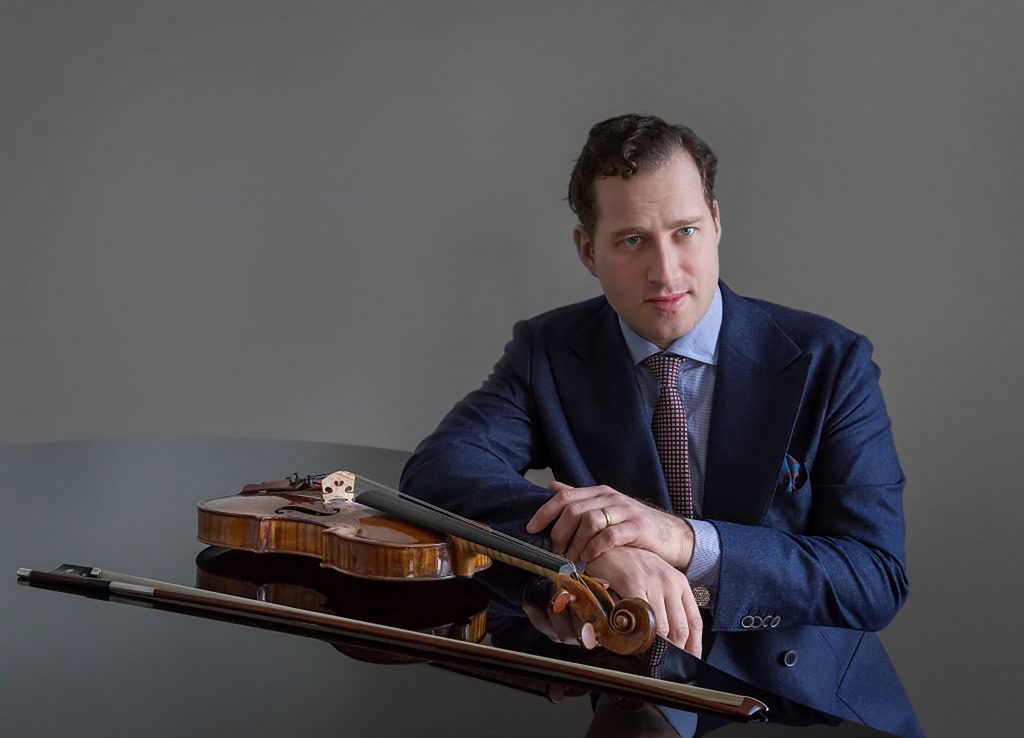
Nikolaj Szeps-Znaider. (Photo by Lars Gundersen/IMG Artists)
By Robert Croan
A British critic has described Guillaume Connesson’s Flammenschrift (Written in Fire) as “Beethoven on speed,” not intending it to be taken as a compliment.
On hearing the French composer’s nine-minute homage to Beethoven played by the Brussels Philharmonic in Broward Center (March 13), I would agree with the epithet – however, in an entirely positive, not at all derogatory meaning. Flammenschrift is a well-constructed, energetic (yes, sometimes to the point of becoming frenetic) piece that gives varying components of the orchestra opportunities to show their chops.
With nods not just to Beethoven but also bits of Richard Strauss and an ending worthy of Ravel’s Daphnis et Chlöe, it’s fun to listen to, and it gives the impression of being fun to play. As a curtain raiser to Wednesday evening’s very pleasant program, it served as a splendid introduction to this worthy and interesting ensemble, about to conclude its American tour with its New York debut tonight in Carnegie Hall. The 48-year old Connesson, currently composer-in-residence with L’Orchestre Nationale de L’Ĭle de France, deserves wider exposure in this country.
Brussels Philharmonic is a quite good orchestra, not one of the great ones, but very capable in the repertory that it highlighted here. Strings came through mellow and soft-grained, more in the mold of the characteristic Philadelphia sound, say, than the New York edge or the Cleveland transparency. Woodwinds were on the weak side, brasses forthright if a little blaring. It may be no coincidence that French conductor and music director Stéphane Denève happens to be the Philadelphia Orchestra’s principal guest conductor. He is also music director-designate of the St. Louis Symphony.
On Broward’s program, the showpiece for the orchestra was a Suite from Prokofiev’s Romeo and Juliet ballet score: not one of the composer’s standard concert suites, but a selection made by Denève that roughly followed Shakespeare’s plot development. While the sequence may have been effective on some subliminal level, the printed program neglected to include the titles and order of individual movements, leaving the audience in the dark for relating the music to the story – although following the plot line seems to have been the conductor’s intent.
In purely musical terms, Prokofiev’s colorful, pungent score was nonetheless a splendid match for this orchestra’s strengths. The incisive string playing and aggressive brasses in “The Montagues and the Capulets” were obvious points to notice, but Denève took pains to make the most of sustained soft passages, notably in the high strings.
Central to the concert was the chestnut of the evening, Beethoven’s Violin Concerto (in D major, Op. 61), played with facility and diffidence by Nikolaj Szeps-Znaider. The Danish violinist, who is simultaneously pursuing a conducting career, was playing on a magnificent honey-toned 1741 Guarnerius “del Gesu” instrument on “extended loan” to him by the Royal Danish Theater. (Another claim to fame for this notable violin is that it was played by the legendary Fritz Kreisler.)
It‘s no surprise, then, that Szeps-Znaider’s tone was quite gorgeous, nor that he elicited a plethora of color and nuance from the instrument – all evident from the soloist’s first statement of the Allegro’s primary theme. His spectacular rendition of the anachronistic but irresistible Kreisler cadenza literally stopped the show at the end of the first movement. The unwonted pause for applause lasted approximately two minutes, while Denève used the time to seat latecomers and Szep-Znaider took the interruption to make jokes about Florida humidity while he retuned.
The atmosphere was more conventional for the remainder of the concerto, yet there was something unfulfilling about the totality. Szep-Znaider reveled in the pure beauty of the sounds he was making – especially in soft measures – to the point of sacrificing expression or nuances of phrasing, while the conductor went along with it all, not so razor-sharp in defining each movement’s rhythmic underpinning as he was when the orchestra was playing alone.
Few in the audience seemed to mind, however. For most, Beethoven’s concerto was what they came to hear. The proof was in the significant number of patrons who stayed for Szep-Znaider’s encore (a bland rendition of an unaccompanied Bach movement), but chose not to return for the second half. They missed out on more than the engaging Prokofiev segments. Some of the orchestra’s best playing came in a rousing encore of its own, the “Farandole” from Bizet’s L’Arlésienne Suite No. 2.